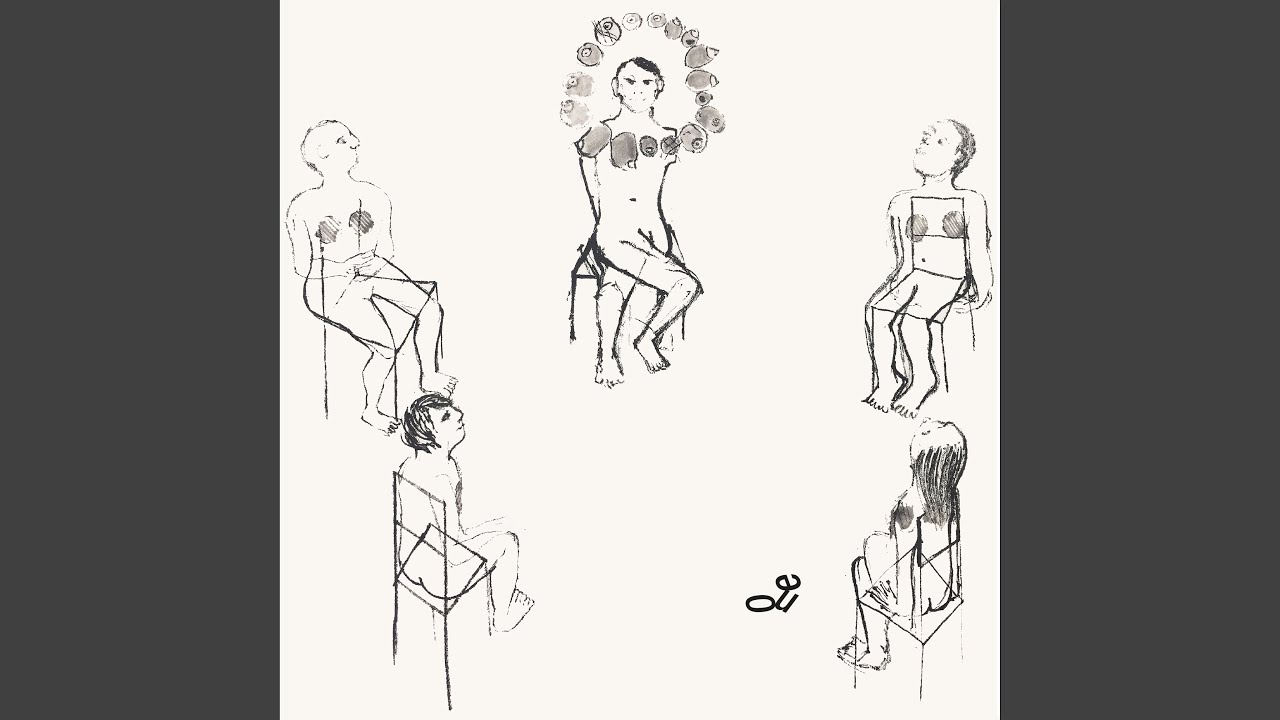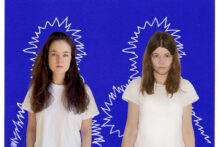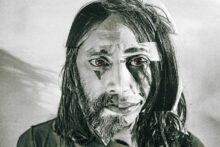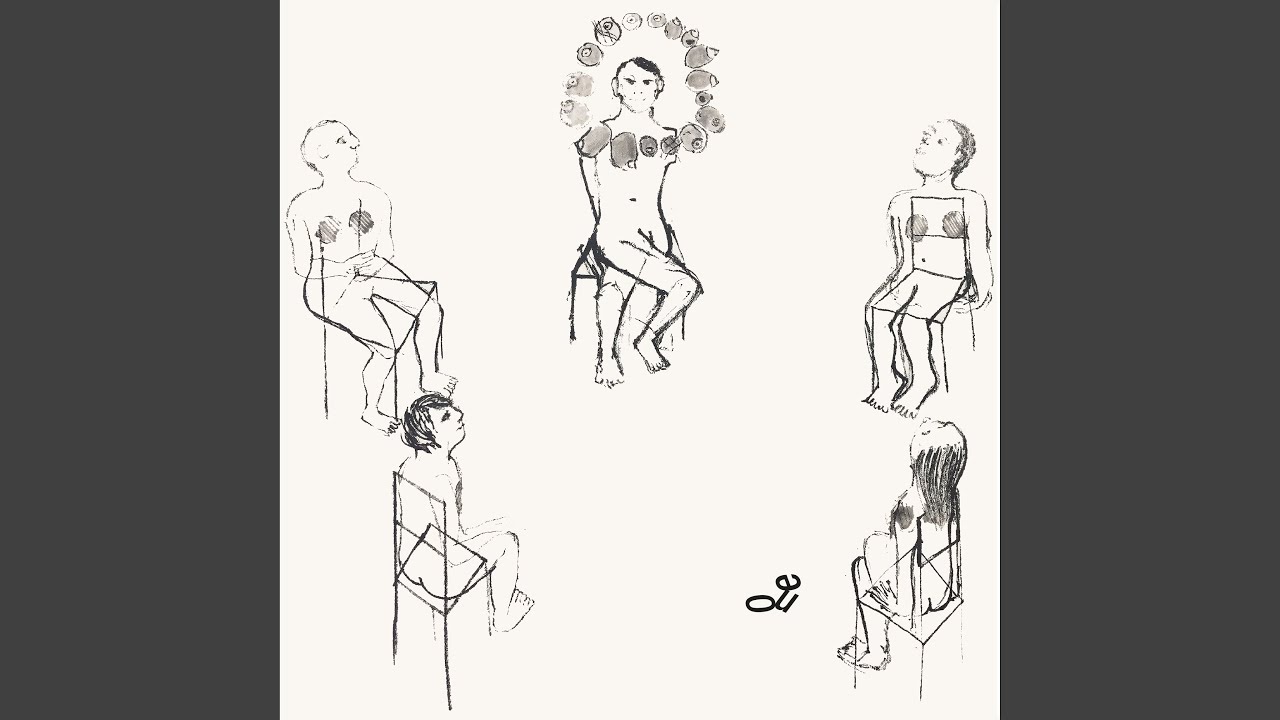Photo credit: Reiner Pfisterer
Venturing out into the streets, you can catch glimpses of the pandemic’s claw marks here and there. A masked person or two on public transport. Congealing hand wash stations in shop doorways. The wheeze of permanently altered lungs. Soft bruises and deeper scars haven’t fully healed. As I type this, I’ve just received confirmation that I can book my next inoculation (is it jab number three or four? Who could say? Perhaps this is the one that’ll finally contain the 5G chip…) yet it feels like a thing of the rapidly retreating past.
Since their inception in 2012, s t a r g a z e has been an eclectic international collective, teaming up with the likes of Poliça, Lisa Hannigan, Nils Frahm, Matthew Herbert, and Black Country, New Road. They’ve reimagined works by Fugazi, Steve Reich, Boards of Canada, and Deerhoof through their own modern classical lens and this time round they’ve enlisted the latter’s sticksman, Greg Saunier, as part of a quintet of remote composers. One is a monument to the remnants of Covid’s thrashed talons. It was forged in lockdown with the members of s t a r g a z e’s orchestra strewn across the planet, no longer able to play together in a room, so resorting to ingenious, studio-based solutions in order to record this intriguing release.
The tracks that make up One were conducted remotely from the kitchen of mainstay Andrè de Ridder. Remembering the set up for Saunier’s opener ‘Metaphor’, de Ridder said “I had to conduct the piece in silence for a camera – hearing it only in my head and imagining it being played”. This unusual approach to composition resulted in the disconnected fragments being stitched together by the original composers who, in addition to Saunier, include Battles’ Tyondai Braxton, regular s t a r g a z e-r Aart Strootman, Nik Colk Void, and Arone Dyer from Bute & Gas.
Dyyer’s involvement is the mouth-watering ‘Voicecream’. Its drawn out tempo luring tightly-plucked, mischievous strings amidst cavorting, delicate melodies, carefully slotting them together to imply the cavalcade notion of an ensemble. A threnody of dynamic juddering notes lead into uncertain but playful staccato stabs. Its cadence reminiscent of dark dance floors as thumping rhythms finely dovetail with dropped bass as delicious as the title’s velvety dollops.
Each segment seems to offer a different response to their predicament. The final piece, ‘Descend’ is the least urgent of all the recordings. It’s a soft, languid spread of sounds that swoon together not unlike waves tonguing at a pebbled shore. Sunlight softly glancing off the miniature crests as they surge gently forward. A jingling and a jangling waft in as if from a distant pushed trolley. It recalls Peter Broderick’s exultant Music For Contemporary Dance with the smooth, silvery violins slurring together, layering on top of one another creating a feeling similar to a collective playing off each other.
Saunier’s contribution, in particular, shines a light on the recording methods. A platter of spirited instruments, including glockenspiel, piano, and flute, swap roles, taking turns to lead and, in doing so, reveal the cut and paste technique used for the recording. There’s a melancholy flutter of seasons. An interchange of deep cello strings, and lighter violin notes combine to give the air of a buoyant animated film involving an impish leaf embarking on a breeze-based adventure. It’s a little bit Pixar but, considering their output contains such thoughtful gems as Wall-E and Inside Out, that’s no criticism.
Continuing the cinematic bent, Tyondai Braxton’s track ‘Vacancy’ is born from three stabs and a bowed swoop that coax violins into life. Imagine one of Attenborough’s many wildlife documentaries depicting an array of intrinsically linked creatures all inhabiting the same section of the savanna. The footage flitting between animals as a predator slowly stalks into shot, gradually spooking them, one by one. They shift from alert and suspicious to terrified and bolting. The conspiratorial tone Braxton employs suggests that the predator is still lurking long beyond their flee to safety as pumped horn parps, akin to a fading heartbeat, peter out.
Nik Colk Void’s piece, however, is where the record hits hardest. Flashing percussion pops up across a panned headspace, like the splatted sand of a Muslimgauze rhythm. The titular single note pulse tapping out a relentless beat for sidling strings and suave horns to lunge around. It gives the impression of a frantic mind trying to figure out an increasingly labyrinthine tube station whilst the clock ticks down to the final train of the night. The strings become increasingly discordant and vicious. Bow hairs fraying and splitting. The sense of unease and panic rising as cracked rim-shots join the march. There’s an urge to stay on the right line, not to succumb to that chasing panic. But, wouldn’t it be easier to just give in? Let it engulf you? The lolling notes that drift out whilst struck strings form a forlorn epilogue, certainly suggest a resolution of sorts.
During a recent lockdown in Shanghai, videos emerged of residents howling in unison from their balconies. In Sidney, there is a group of women that meet up to scream in the dead of night. Some people wanted to apportion blame. Others created. Whilst the individual contributions initially make One feel like a collection of tracks rather than a cohesive whole, the more it sits with you, the more it becomes clear that these separate components reflect the wildly varying experiences of those who’ve made it out the other side of Covid. Whatever method you enlisted for getting through the past couple of years, be glad that the people behind s t a r g a z e were resourceful enough to build this musical legacy to that trying time. They may have been scattered across continents and oceans but they came together as one for these recordings, ensuring that the dwindling past is captured in the vivid, crystalline strokes of a distant conductor’s baton.







